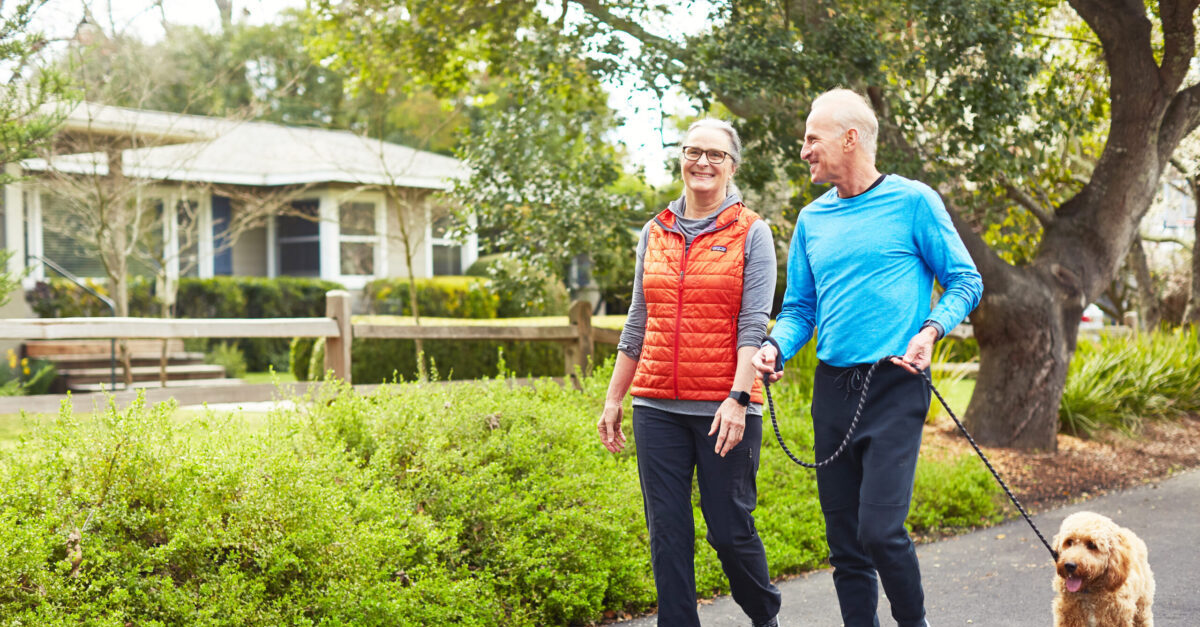Supporting Healthy Habits for Older Adults with Fitbit
Healthy habits don’t always start when a person is young. But it’s never too late to begin again. People of any age can learn to create new, healthy habits and still reap the benefits of living healthier, more active lives.
Developing healthy habits begins by making daily changes – in all the right places. With Fitbit devices, older adults have all the tools they need to get more active, understand their nutrition needs, stay on top of their medical conditions, improve their sleep, and even connect with others socially.
Plus, many Medicare Advantage plans include covered fitness benefits providing free or subsidized Fitbit devices to their members, while others offer benefits that include dollars to spend on over-the-counter (OTC) products, which increasingly includes Fitbit devices in the catalog. Be sure to check your plan benefits to see if you qualify for a free or subsidized Fitbit device.
Three Ways Fitbit Can Help Older Adults Form Healthy Habits
So how exactly can something as small as a Fitbit device help make such large–and impactful–changes in a person’s daily health habits? Let’s take a closer look at four important ways that Fitbit provides support and insights for older adults in their health journey.
1. Detecting early signs of AFib
A good indicator of a person’s health is the heart. One common heart ailment is atrial fibrillation, also called AFib or AF. This is a quivering or irregular heartbeat (arrhythmia) that can lead to blood clots, stroke, heart failure and other heart-related complications. The American Heart Association estimates that at least 2.7 million Americans are living with AFib.
AFib can affect people of any age, but older adults are more likely to have other conditions that raise the risk of AFib, such as high blood pressure, coronary artery disease, heart failure, and more. Both AFib and age each raise a person’s risk of a stroke, which means that if an older adult has AFib, the chances of stroke are much higher.
Fitbit’s electrocardiogram (ECG) feature measures the heart’s electrical activity and records those electrical signals to look for signs of AFib. A user can take a heart rhythm assessment from their Fitbit device and set up the ECG feature in the Fitbit app to get their results.
Fitbit devices can analyze a person’s heart rhythm while still or sleeping and look for potential signs of AFib. Fitbit allows a person to monitor irregular heart rhythms and set up notifications to be alerted of any variation. With Irregular Heart Rhythm Notifications, a person has the information they need to have more informed conversations with their doctor about heart health. Set up only takes a few minutes in the Fitbit app. Click here for a quick overview.
2. Managing health risk behaviors
Part of aging for all of us is learning how to manage health risks. According to the CDC, 80 percent of older adults have one chronic condition, and 50 percent have two. Key indicators of health risk behaviors include lack of activity, eating fewer than five fruits and vegetables per day, obesity, and smoking.
If a person has had less than ideal habits, it might feel intimidating to make lifestyle changes. But making behavior changes at any age can have a dramatic impact on a person’s overall health.
Using Fitbit’s features can help people make better nutrition choices and incorporate healthy exercise into their daily lives. For example, Fitbit’s blood glucose feature can help people manage their blood glucose levels by logging them regularly in the app. They can learn how behaviors such as diet, activity and sleep, and other factors, including stress and medication adherence, could be affecting blood glucose levels.
Fitbit helps a person quickly know if they’re outside their personal blood glucose target range by watching trends over time, and they can set reminders to regularly log levels.
3. Improving physical and mental health
One of the most important healthy habits on everyone’s list is getting enough activity. Fitbit offers an ever-expanding library of workouts for older adults, as well as step-by-step programs that aim to help you eat well and move more.
Sleep also plays an integral role in physical health, and older adults commonly experience changes in the quality and duration of their sleep. Sleep supports productivity, fights weight gain and boosts the immune system. So it’s important to know the amount and type of sleep a person gets each night to develop optimal sleep habits.
By tapping into nighttime heart rate and movement patterns, Fitbit devices can estimate how much time a person spends in light, deep, and rapid eye movement (REM) sleep which is then captured in the Fitbit app. Each sleep stage serves a different purpose, so understanding how much of each stage a person logs can help identify sleep-related issues.
Fitbit’s sleep tracking analysis also includes a daily Sleep Score and restoration data, such as sleeping heart rate, restlessness, snore and noise levels, and an estimated blood oxygen variation. Having this dreamy dataset can help a person improve their sleep routine, as Fitbit offers features such as bedtime reminders and smart wake alarms that go off at the optimal sleep stage.
But sleep and physical activity are only part of the equation. Mental and emotional health is just as important as physical health and can often be overlooked.
Stress management is a crucial component of health management. Ongoing stress can have detrimental effects on a person’s body and may increase a person’s resting heart rate or lead to a weakened immune system, which is particularly risky for older adults.
Fitbit devices provide a stress management score in the Fitbit app, to help people see if the body is showing signs of stress on a daily basis. The app also has mindfulness and breathing tools to help people manage stress and make adjustments.
—
Are you interested in learning if you are eligible for free or discounted Fitbit devices? Log in to your health plan’s member website and look for a health and wellness discount section to find out.



